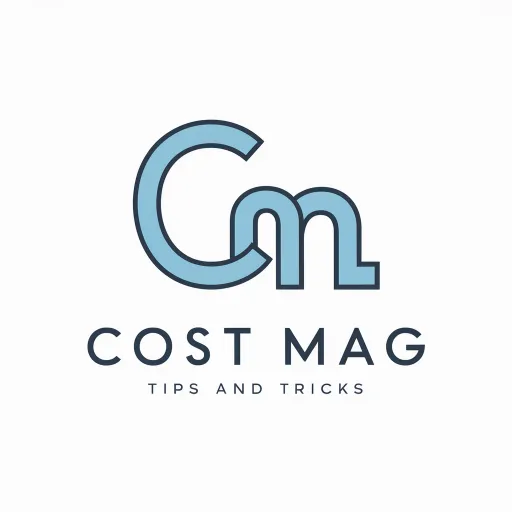The quest for the perfect fit of a cherished ring often leads individuals to consider resizing their jewelry. Behind this seemingly simple endeavor lies a complex web of financial considerations that may come as a surprise to many.
In this article, we discuss “How much does it cost to resize a ring?”. We’ll delve into the various factors that influence the expenses associated with this service, shedding light on the financial aspects of achieving that ideal ring size.
Whether you’re seeking to enlarge, reduce, or adapt your ring for a better fit, understanding the costs involved is essential in making an informed decision and ensuring your beloved jewelry is both comfortable and economically sound.
Factors Influencing Ring Resizing Cost
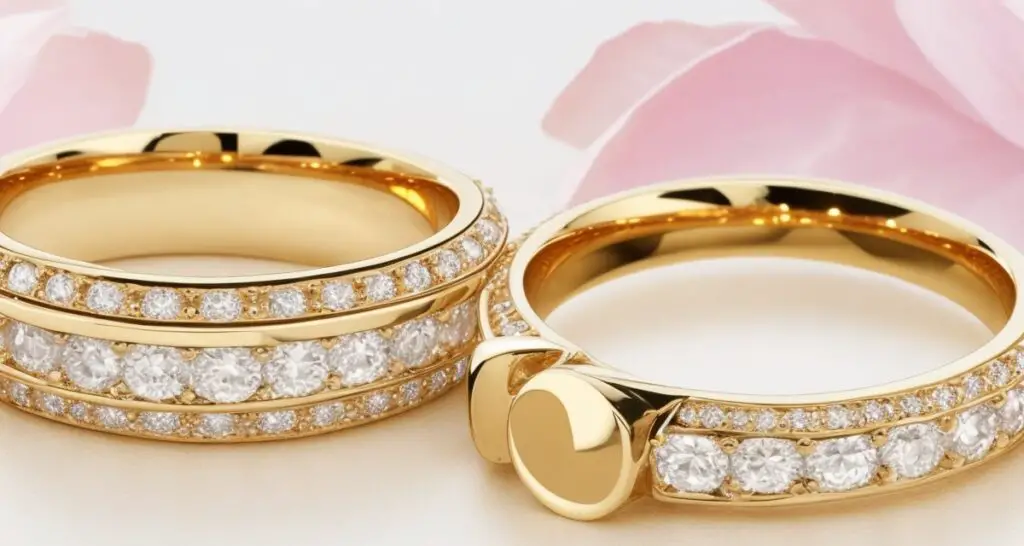
It’s a common desire to ensure your ring fits perfectly, but have you ever taken a closer look at the financial considerations involved in making adjustments to your jewelry? In this article, we will provide a comprehensive exploration of the world of ring resizing, examining the various factors that intricately shape the expenses tied to this particular service.
Material Type:
The cost of resizing depends significantly on the type of material your ring is made of. Precious metals like gold and platinum tend to be more expensive to resize than other materials.
Ring Size Adjustment:
The degree to which your ring needs resizing plays a crucial role. Enlarging a ring typically requires more material and labor, thus increasing the overall cost.
Gemstones and Settings:
Rings with gemstones or intricate settings may require specialized techniques, impacting the cost. Setting and securing gemstones in the resized ring can be a delicate and time-consuming process.
Ring Design Complexity:
Elaborate ring designs with intricate patterns, engravings, or multiple bands may incur higher costs due to the added intricacy in the resizing process.
Local Labor and Expertise:
The location of the jeweler and their level of expertise can significantly affect pricing. Skilled and experienced jewelers may charge more for their services.
Urgency:
If you need your ring resized urgently, it may involve additional costs, as some jewelers offer expedited services for a premium.
Additional Services:
Any additional services, such as polishing, rhodium plating, or cleaning, can add to the overall cost of ring resizing.
Warranty or Insurance:
Some jewelers may offer warranty or insurance options for resized rings, which could affect the final expenses.
Local Market Conditions:
The pricing of ring resizing can vary based on the local market and demand for such services.
Consultation and Estimates:
Many jewelers offer free consultations and cost estimates, so it’s advisable to explore different options and gather estimates to make an informed decision.
Understanding the costs associated with ring resizing involves considering several intricate factors, including the type of material, the complexity of the adjustment, the presence of gemstones, and the expertise of the jeweler. By carefully assessing these elements and seeking multiple estimates, you can make an informed decision when resizing your ring to achieve the perfect fit without any surprises in terms of expenses.
Types of Rings and Their Resizing Expenses

Resizing rings isn’t a one-size-fits-all process; it varies based on the type of ring you own. Understanding the intricacies of resizing costs for different ring types is crucial. Let’s take a comprehensive journey through the factors that influence resizing expenses for various categories of rings:
Engagement Rings:
Engagement rings often feature precious gemstones like diamonds. Resizing may involve adjusting prongs and settings to accommodate changes in size, potentially leading to increased labor and material costs.
Wedding Bands:
Wedding bands are typically more straightforward to resize, especially if they’re plain bands without intricate designs. The resizing process for wedding bands usually incurs lower costs compared to other ring types.
Family Heirlooms:
Resizing a family heirloom ring can be more complex. These rings may have sentimental value, intricate designs, or unique gem settings, requiring careful handling and skill, which can impact the cost.
Cocktail Rings:
Cocktail rings, known for their elaborate designs and large gemstones, often require meticulous resizing. The complexity of these rings can result in higher expenses due to the level of craftsmanship involved.
Eternity Rings:
Eternity rings, featuring gemstones encircling the entire band, demand specialized techniques for resizing. The intricacy of this process can lead to increased costs.
Signet Rings:
Signet rings, bearing engraved designs and often customized details, require precise resizing to maintain the aesthetics. This level of attention can influence the final price.
Cluster Rings:
Cluster rings with multiple small stones or intricate settings can be more costly to resize. Each stone may need individual adjustments, increasing labor and material expenses.
Metal Types:
The type of metal used in the ring also affects resizing costs. Rings made from rare or valuable metals, such as platinum, can be more expensive to resize than those made from common materials.
Gemstones:
The type, size, and number of gemstones in the ring contribute to the resizing cost. Precious gems require more meticulous handling, adding to the overall expense.
Jeweler Expertise:
The experience and skill of the jeweler play a vital role in determining the resizing cost. A skilled jeweler may charge more for their craftsmanship.
Additional Services:
Depending on the condition of the ring, services like cleaning, re-plating, or refurbishing may be necessary, which can further affect the resizing expenses.
Urgency and Warranty:
Urgent resizing and the inclusion of warranty or insurance options may also contribute to the overall cost.
By thoroughly considering these factors, you can better estimate the resizing expenses for your specific ring type. This detailed insight empowers you to make informed decisions, ensuring your cherished jewelry is not only resized to perfection but also suits your budgetary expectations.
Exploring the Process of Ring Resizing
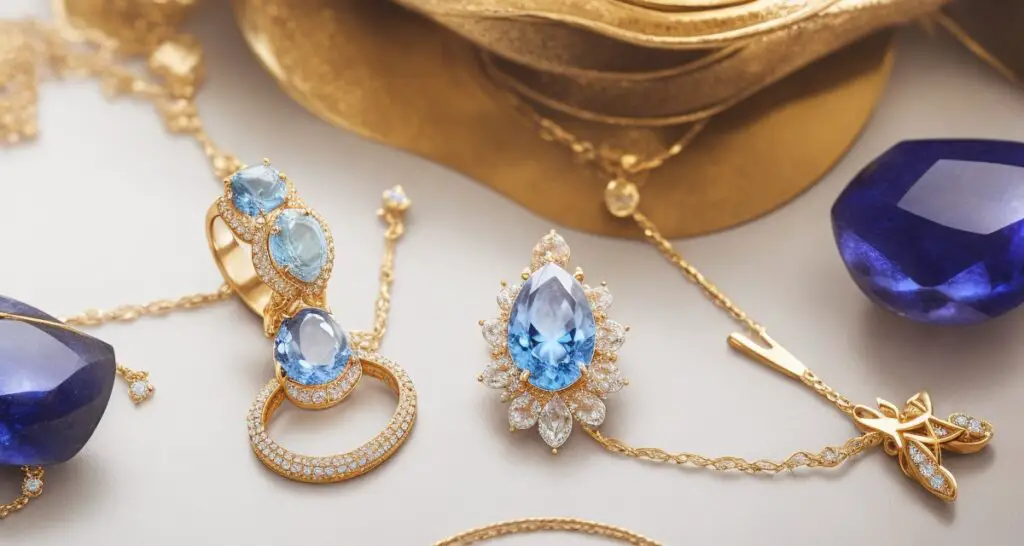
Have you ever wondered about the fascinating journey your beloved ring goes through when it needs resizing? In this detailed exploration, we will take you on a step-by-step tour of the intricate process of ring resizing. This journey will not only satiate your curiosity but also provide you with a profound understanding of the craftsmanship, skill, and precision that underlie this art. Moreover, it will shed light on the factors influencing the pricing structure of ring resizing.
Step 1: Initial Assessment
The resizing process begins with a meticulous assessment of your ring. The jeweler will closely examine its current size, material, and design. Any existing gemstones and settings are inspected to ensure their safety during the resizing process.
Step 2: Consultation and Sizing
You’ll engage in a consultation with the jeweler to discuss your desired ring size and any specific alterations you may require. Precise measurements are taken to ensure the resized ring will fit comfortably.
Step 3: Material Handling
If the ring needs to be enlarged, the jeweler may need to add extra material to the shank (the ring’s band). Alternatively, if a reduction is necessary, material will be carefully removed.
Step 4: Soldering and Seamless Integration
In cases where additional material is needed, the jeweler will skillfully solder the new segment to the existing band, ensuring a seamless and secure connection.
Step 5: Shaping and Smoothing
The reshaped ring is carefully contoured to achieve the desired size and shape. Any excess material is expertly removed, and the surface is smoothed and polished for a flawless finish.
Step 6: Gemstone and Setting Preservation
For rings with gemstones, meticulous care is taken to protect them during the resizing process. Prongs or settings are adjusted as needed to accommodate changes in the ring’s dimensions, all while safeguarding the gems’ integrity.
Step 7: Final Inspection
A thorough quality check is conducted to ensure that the resized ring meets your specifications and quality standards. Any necessary adjustments are made at this stage.
Step 8: Additional Services (Optional)
Depending on the ring’s condition and your preferences, additional services like cleaning, rhodium plating, or polishing may be offered to enhance the overall appearance.
Step 9: Presentation and Consultation
The jeweler presents the resized ring to you for a final consultation. You have the opportunity to examine the ring and ensure it meets your expectations in terms of size, fit, and aesthetics.
This comprehensive walkthrough of the ring resizing process showcases the precision, expertise, and attention to detail involved at every stage. It’s important to understand that the complexity and materials involved in each step can influence the overall cost of ring resizing. By gaining insight into this process, you not only satisfy your curiosity but also make well-informed decisions when considering this service for your treasured jewelry.
The Importance of a Professional Jeweler
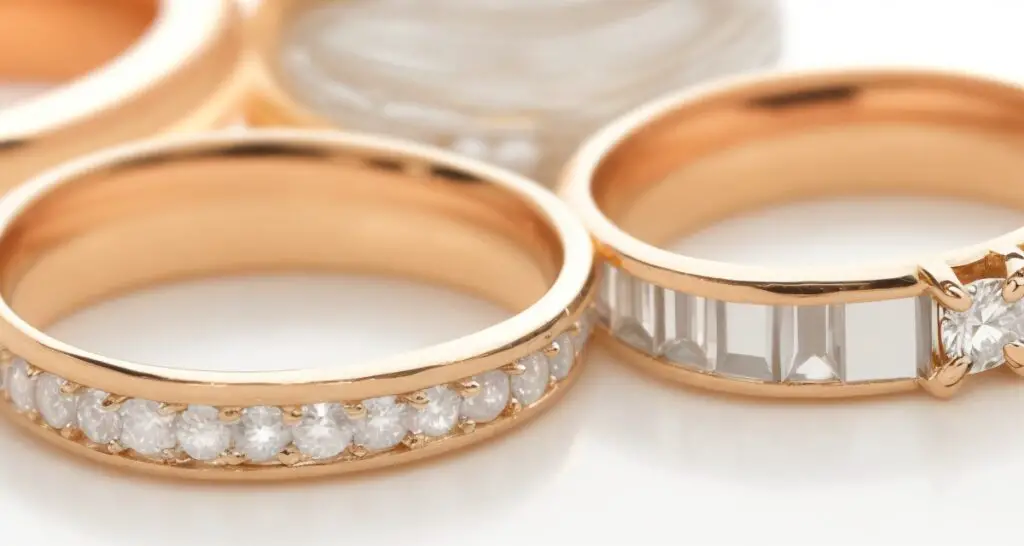
Selecting the right jeweler is a pivotal decision when you’re considering resizing your precious ring. In this comprehensive discussion, we will explore in depth the profound significance of entrusting your cherished jewelry to a seasoned professional. This in-depth exploration will emphasize how the choice of an expert jeweler impacts not only the quality of the resizing service but also the financial considerations involved.
Skill and Precision:
A professional jeweler possesses the expertise and precision required for intricate resizing work. They can carefully manipulate the ring to achieve the desired size without compromising its structural integrity.
Gemstone Handling:
Expert jewelers are adept at handling gemstones with care and precision. They can adjust prongs and settings to accommodate size changes while safeguarding the gem’s safety and brilliance.
Quality Materials:
Reputable jewelers use high-quality materials in the resizing process. Whether adding or subtracting material, they ensure it matches the original composition, maintaining the ring’s integrity and longevity.
Aesthetic Considerations:
Expert jewelers pay close attention to the aesthetic details. They can seamlessly blend any added material, ensuring that the resizing is virtually imperceptible.
Custom Solutions:
Skilled jewelers can offer customized solutions, catering to your specific requirements. Whether it’s a simple band or an intricately designed ring, they can adapt their approach to suit your needs.
Quality Assurance:
Professional jewelers often provide warranties and quality guarantees for their work. This assurance not only reflects their confidence in their craftsmanship but also adds a layer of protection for your investment.
Consultation and Communication:
An experienced jeweler will engage in open communication with you throughout the resizing process. They will provide insights, answer your queries, and ensure your expectations are met.
Cost Transparency:
Reputable jewelers are transparent about their pricing structure. They will offer detailed estimates and breakdowns of the resizing costs, preventing any unexpected expenses.
Reputation and Reviews:
Researching a jeweler’s reputation and reading reviews can help you gauge their trustworthiness and customer satisfaction. A professional with a strong track record is likely to deliver a higher level of service.
Long-Term Benefits:
While the initial cost of professional resizing might be higher, the long-term benefits in terms of durability, aesthetics, and overall value can outweigh any cost savings from opting for an inexperienced or unqualified service.
By delving into these facets, you can grasp the profound importance of choosing a professional jeweler for your ring resizing needs. The expertise, attention to detail, and commitment to quality that an expert jeweler brings to the process not only ensures that your cherished jewelry remains in excellent condition but also guarantees a sound investment in its long-term integrity.
Extra Services and Their Associated Expenses
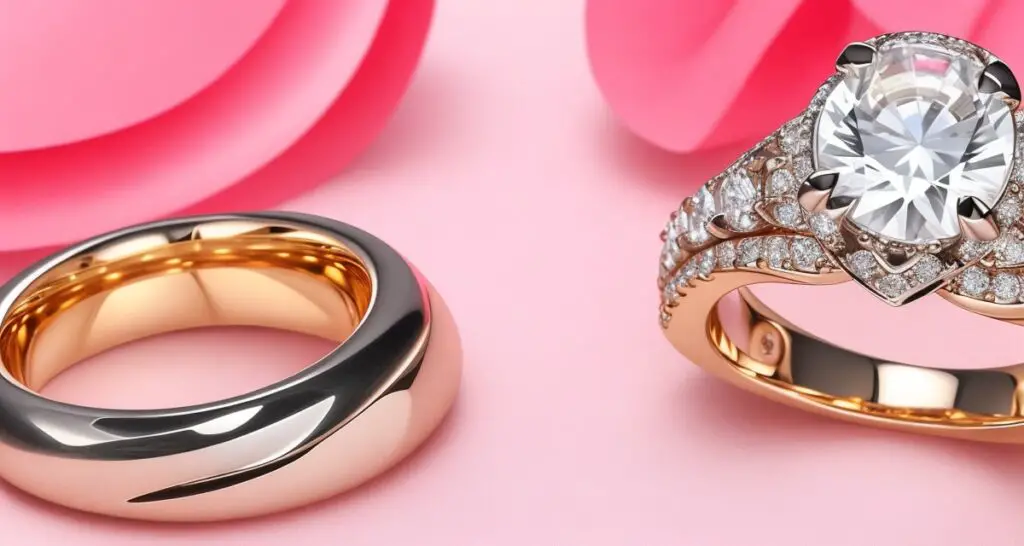
Beyond resizing, your ring may necessitate additional services to enhance its beauty, durability, or personalization. In this in-depth examination, we will delve into the world of extra services such as engraving, polishing, and gemstone resetting, offering a thorough understanding of what each service entails and its associated costs.
Engraving:
Engraving allows you to personalize your ring with meaningful inscriptions, dates, or symbols. The cost of engraving depends on the complexity of the design and the characters involved. Intricate engravings may incur higher costs.
Polishing and Cleaning:
Over time, rings can accumulate dirt and lose their luster. Professional polishing and cleaning services restore the ring’s shine. The cost varies based on the material and intricacy of the design.
Rhodium Plating:
Rhodium plating is commonly used for white gold rings to enhance their color and shine. The expense depends on the size of the ring and the amount of rhodium required.
Gemstone Resetting:
Gemstone resetting is essential if gemstones become loose or need repositioning. The cost is determined by the type, size, and number of gemstones and the complexity of the setting.
Replating (for Gold Rings):
Gold rings can develop wear over time, necessitating replating. The cost varies with the thickness of the gold layer applied.
Estate or Vintage Ring Restoration:
Restoring estate or vintage rings to their former glory can be a delicate and intricate process. The cost depends on the extent of restoration required, which may include re-setting gemstones, repairing intricate designs, and ensuring the ring retains its historical charm.
Customization:
If you desire unique design modifications, such as adding side stones, filigree work, or intricate patterns, the cost will depend on the materials and complexity of the customization.
Quality Guarantees and Warranty:
Some jewelers offer quality guarantees or warranties for the additional services they provide. These can add to the overall cost but provide peace of mind regarding the work’s longevity and quality.
Consultation and Personalization:
It’s essential to communicate your preferences and expectations with the jeweler during consultations. They can tailor the additional services to align with your specific desires, which may impact costs.
By understanding the details of these supplementary services and their respective costs, you’ll be better equipped to make informed decisions on how to enhance and maintain your cherished ring. Each service carries its unique intricacies, and their prices vary based on several factors, so gaining insight into these elements allows you to invest wisely in the care and preservation of your precious jewelry.
Guidance for Cost-Effective Ring Resizing
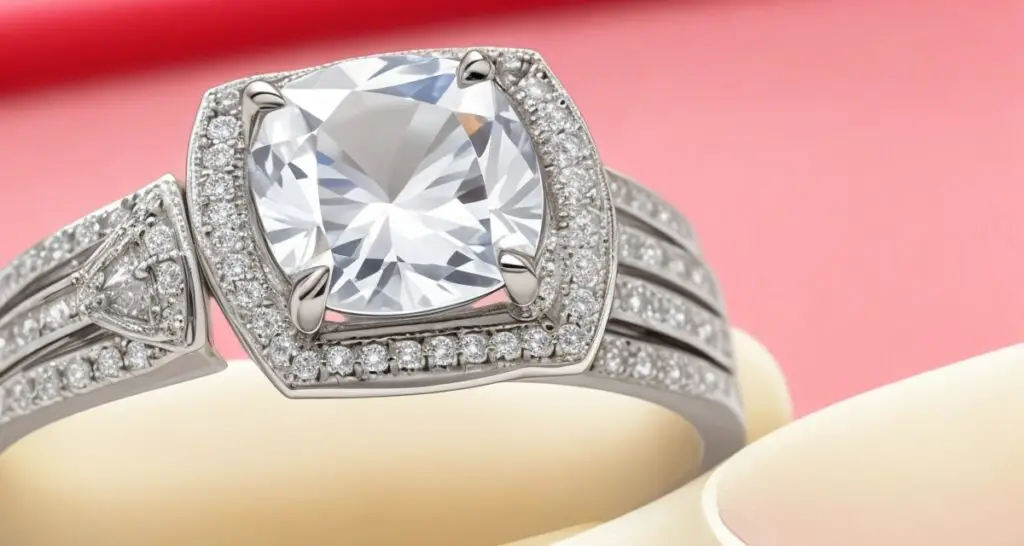
Ring resizing is an essential step in ensuring the perfect fit, but it need not be financially burdensome. Let’s delve deeper into a range of practical and detailed tips and strategies that will empower you to secure the best value for your investment, all while preserving the quality and craftsmanship you expect:
Select a Professional Yet Affordable Jeweler:
Research local jewelers and compare their pricing and reputation. A balance between professionalism and affordability is achievable by choosing a reputable jeweler with competitive rates.
Avoid Urgent Resizing:
Planning ahead is key. Avoid the added costs associated with urgent resizing requests by giving your jeweler adequate time to complete the work.
Bundle Services:
If your ring requires additional services such as polishing or cleaning, consider bundling them with the resizing. Some jewelers offer discounts for multiple services performed at once.
Material Optimization:
Discuss material options with your jeweler. They can suggest strategies to minimize material usage, particularly when downsizing a ring, potentially reducing costs.
Choose an Experienced Jeweler:
Opting for an experienced jeweler ensures precise and efficient work. Their expertise can help avoid unnecessary expenses related to errors or suboptimal resizing.
Quality Over Quantity:
Prioritize quality over quantity. While it might be tempting to resize multiple rings simultaneously, focusing on one at a time allows for more attention to detail and potentially lowers costs.
Insurance and Warranty:
Carefully evaluate insurance and warranty options. While they may add to the initial cost, they can provide long-term protection, potentially saving you money in case of future issues.
Open Communication:
Maintain open communication with your jeweler. Clearly convey your budget, expectations, and any concerns you may have. This dialogue can lead to tailored solutions that meet your financial objectives.
Repurpose Existing Materials:
If your ring needs to be downsized significantly, inquire about repurposing excess material for other jewelry pieces or designs. This can maximize the value of your investment.
Regular Maintenance:
Schedule regular maintenance for your ring to catch issues early, preventing more extensive and costly repairs in the future.
Explore Alternative Materials:
If resizing costs for a precious metal ring are prohibitive, consider alternative materials like silver or stainless steel for daily wear.
Quality Checking:
Insist on a thorough quality check before finalizing the resizing. This step helps ensure that the work meets your expectations and avoids costly revisions.
By adopting these strategies and guidelines, you’ll be well-equipped to save money on ring resizing while safeguarding the quality and craftsmanship you value. Making informed decisions, selecting a skilled jeweler, and managing your budget thoughtfully will enable you to enjoy the perfect fit without unnecessary financial strain.
Conclusion
The cost of resizing a ring is a multi-faceted consideration. It varies significantly based on factors such as the type of ring, the extent of resizing required, the choice of jeweler, and additional services.
Whether you own an engagement ring, a wedding band, a family heirloom, or a unique design, the intricacies of the resizing process and materials used play a significant role in determining the cost.
Engaging a reputable and experienced jeweler is essential to ensure the quality of work, and open communication about your preferences and budget is crucial.
While resizing a ring represents an investment in achieving the perfect fit, adopting cost-effective strategies and careful planning can help you obtain the best value for your money without compromising the craftsmanship or quality of your cherished jewelry.
FAQs Of How Much Does It Cost To Resize A Ring?
How much does it typically cost to resize a ring?
The cost of resizing a ring varies depending on several factors, including the type of ring, the material, and the extent of resizing needed. On average, you can expect to pay anywhere from $50 to $150 for a straightforward resizing, but this can increase if the resizing involves precious metals or intricate designs.
Are there additional costs beyond the initial resizing fee?
Yes, there can be additional costs. If your ring needs extra services such as engraving, polishing, gemstone resetting, or rhodium plating, these services come with their own fees. The total cost depends on the specific services required.
Does the type of metal in the ring affect the cost of resizing?
Absolutely. The type of metal used in the ring significantly impacts the cost. Precious metals like gold and platinum are more expensive to resize compared to materials like silver or stainless steel.
Does the complexity of the ring’s design influence the cost of resizing?
Yes, complex ring designs with intricate patterns, multiple bands, or elaborate settings can result in higher resizing costs. More intricate designs require more time and expertise to resize accurately.
Can I save money on ring resizing, and if so, how?
Yes, you can employ several strategies to save on ring resizing costs. Consider choosing a reputable but affordable jeweler, bundling services, avoiding urgent resizing, and discussing material optimization with your jeweler. Open communication, careful budgeting, and prioritizing quality over quantity can help you obtain the best value for your investment.
